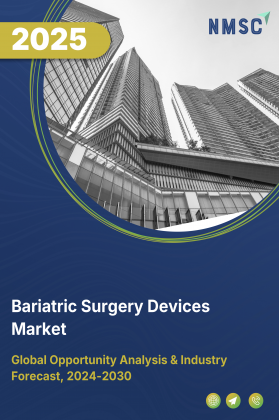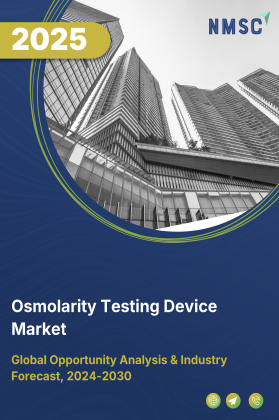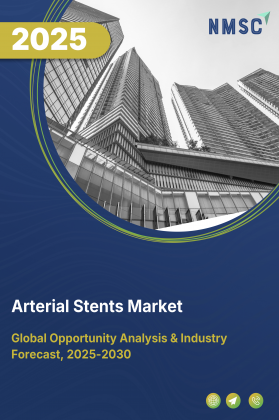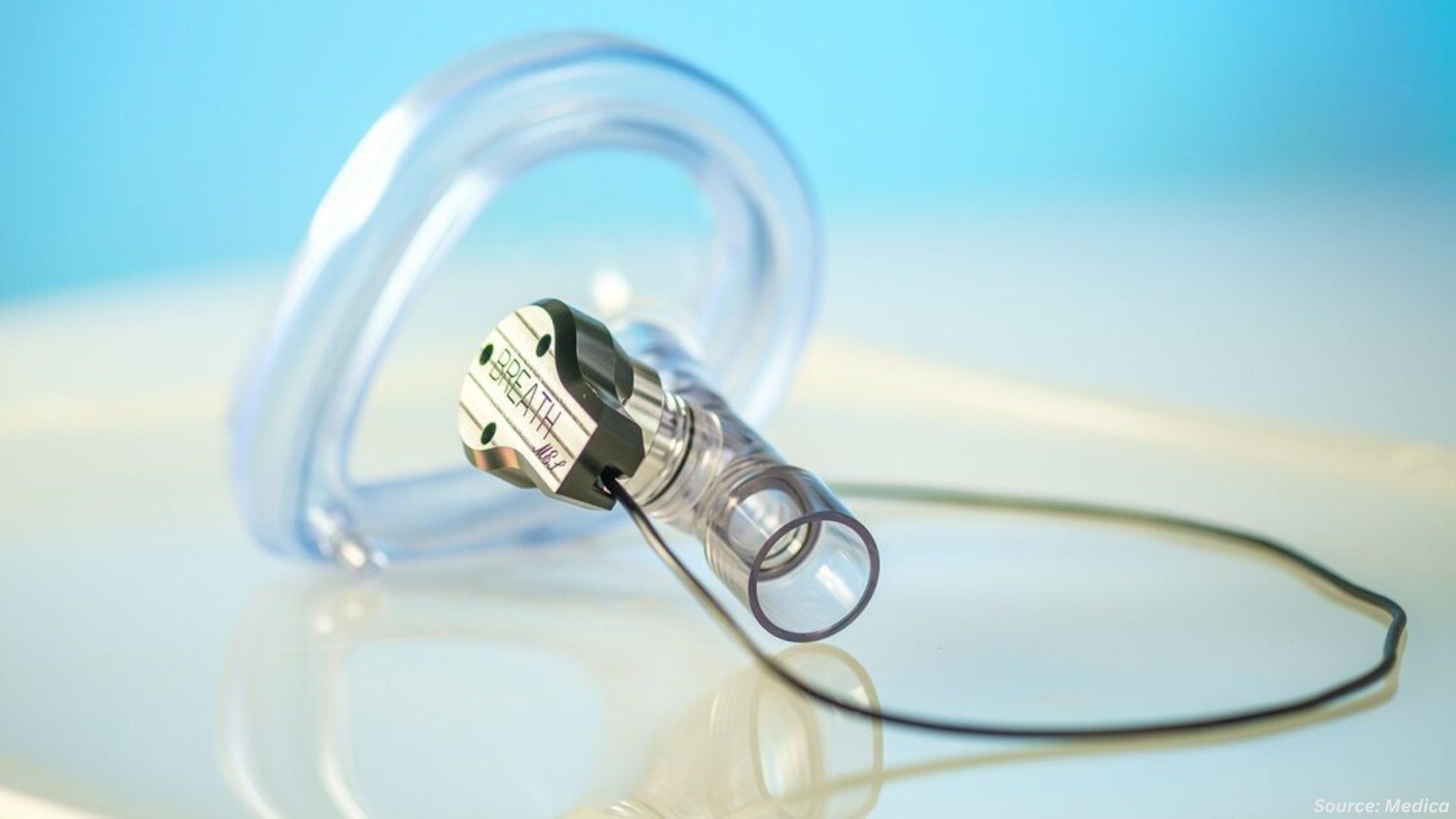
Bariatric Surgery Devices Market by Device Type (Adjustable Gastric Bands, Gastric Balloons, Gastric Staplers and Others), by Technology (Open Surgery Devices, Laparoscopic, Robotic-Assisted Devices and Others), by Procedure Type (Roux-en-Y Gastric Bypass, Vertical Sleeve Gastrectomy and Others), by Application (Obesity Management, Type 2 Diabetes Management and Others) and by End-User (Hospitals, Specialty Clinics and Others) – Global Opportunity Analysis and Industry Forecast, 2025–2030
Bariatric Surgery Devices Industry Outlook
The global Bariatric Surgery Devices Market size was valued at USD 2.40 billion in 2024, with an estimation of USD 2.56 billion in 2025 and is predicted to reach USD 3.51 billion by 2030 with a CAGR of 6.5% from 2025-2030.
The market is experiencing significant growth, driven by the global rise in obesity and associated chronic diseases such as diabetes and cardiovascular disorders. Increasing medical tourism, particularly in cost-effective healthcare destinations, is expanding the patient base and boosting demand for advanced devices.
Technological advancements, including minimally invasive and laparoscopic solutions, are enhancing surgical efficiency, reducing complications, and improving patient recovery, further supporting adoption. However, high procedural costs and limited insurance coverage remain key barriers, especially in emerging markets. Looking forward, the rising adoption of robotic-assisted and precision-guided bariatric devices presents a strong opportunity for sustained market expansion.
Rising Obesity Rates Driving Device Demand
The global surge in obesity is a major factor fueling the bariatric surgery devices market demand. Obesity is closely associated with chronic health conditions such as diabetes, hypertension, and cardiovascular diseases, increasing the reliance on surgical weight-loss solutions.
According to the World Obesity Atlas 2022, it is projected that by 2030, around one billion people worldwide, including 1 in 5 women and 1 in 7 men will be living with obesity, highlighting a growing market for bariatric surgical interventions.
Growth in Medical Tourism Expands Market Reach
The affordability and accessibility of bariatric surgeries in medical tourism hubs have attracted a significant influx of international patients. This trend has not only increased the adoption of bariatric procedures but also expanded the demand for advanced surgical devices used in these treatments. For instance, India recorded 1,31,856 foreign tourist arrivals for medical purposes by April 2025, representing roughly 4.1% of total foreign arrivals, reflecting the market potential in countries catering to medical travelers.
Advancements in Surgical Technologies Enhance Device Adoption
Technological innovations in bariatric surgery devices, including minimally invasive and laparoscopic solutions, have improved patient outcomes by reducing recovery time, minimizing complications, and shortening hospital stays. These advancements have made surgical interventions safer, more efficient, and increasingly attractive to both surgeons and patients, thereby driving the bariatric surgery devices market expansion.
High Cost of Bariatric Procedures Hinders the Market Growth
The substantial expense associated with bariatric surgeries and the devices used in these procedures remains a major barrier to the bariatric surgery devices market growth. The overall cost includes not only the surgical devices themselves but also preoperative evaluations, hospitalization, anesthesia, and postoperative care. In price-sensitive regions, these high costs prevent patients from opting for surgical interventions, even when medically necessary.
Moreover, insurance coverage for bariatric surgery varies widely across countries, and in many cases, procedures are only partially reimbursed or not covered at all. This limited reimbursement further increases out-of-pocket expenses, reducing patient accessibility. As a result, hospitals and healthcare providers also be hesitant to invest in costly, advanced bariatric devices without a guaranteed patient base.
Additionally, emerging markets, where obesity rates are rising rapidly, face economic constraints that restrict widespread adoption of surgical interventions. Consequently, the high cost of bariatric procedures continues to act as a key restraint, slowing the penetration of innovative devices despite increasing demand driven by global obesity trends.
Rising Adoption of Minimally Invasive Devices Create a Future Growth Opportunity
The growing shift toward laparoscopic and robotic-assisted bariatric devices is poised to be a significant opportunity for market expansion, in the coming years. As hospitals and surgical centers increasingly adopt these minimally invasive technologies, they offer patients safer procedures with shorter recovery times and fewer complications.
Looking ahead, continued advancements in robotic systems, smart surgical tools, and precision-guided devices are expected to further enhance surgical outcomes and patient satisfaction. This trend not only drives demand for next-generation bariatric devices but also opens avenues for manufacturers to introduce innovative solutions that cater to evolving surgical practices and patient preferences. With obesity rates rising globally, the adoption of these advanced devices represents a lucrative opportunity for long-term growth in the bariatric surgery devices industry.
Market Segmentations and Scope of the Study
The bariatric surgery devices market report is segmented on the basis of device type, technology, procedure type, patient demographics, distribution channel, application, end-users and region. On the basis of device type, the market is divided into adjustable gastric bands, gastric balloons, gastric staplers, sutures & accessories, robotic-assisted surgical systems, laparoscopic instruments, energy-based devices, endoscopic devices, and others. On the basis of technology, the market is classified into open surgery devices, laparoscopic, robotic-assisted devices, endoscopic devices, and hybrid devices. Based on procedure type, the market covers Roux-en-Y gastric bypass, vertical sleeve gastrectomy, biliopancreatic diversion with duodenal switch, adjustable gastric banding, endoscopic procedures, revisional bariatric surgery, and others. On the basis of patient demographics, the market is segmented into adults, elderly, adolescents, and gender-specific usage trends. By distribution channel, the market is divided into direct sales, third-party distributors, and online platforms. Based on application, the market is classified into obesity management, type 2 diabetes management, hypertension & cardiovascular risk reduction, weight-related metabolic disorders, and other comorbidity management. Finally, on the basis of end-users, the market is segmented into hospitals, specialty clinics, ambulatory surgical centers, outpatient care facilities, and academic & research institutes. The regional breakdown includes regions such as North America, Europe, Asia-Pacific, and the Rest of the World (RoW).
Geographical Analysis
North America continues to dominate the bariatric surgery devices market share, driven by high obesity prevalence and growing awareness of obesity-related health risks. Advanced healthcare infrastructure, access to cutting-edge surgical technologies, and supportive insurance coverage make bariatric procedures more accessible.
Hospitals and surgical centers are increasingly adopting minimally invasive and robotic-assisted devices, further driving market growth. Obesity in the United States remains a significant concern and continues to rise, with nearly 3 in 4 adults classified as overweight or obese, highlighting the sustained demand for surgical weight-loss interventions.
Europe’s market shows steady growth, supported by government initiatives, healthcare policies promoting bariatric interventions, and increasing acceptance of minimally invasive procedures. The region’s focus on preventive healthcare, combined with high awareness of obesity-related chronic diseases, encourages the adoption of advanced bariatric technologies.
EU funding has played a key role in enabling HealthTech advancements, with over USD 17.6 billion USD allocated through programs like the Cohesion Policy and the Recovery and Resilience Facility between 2014 and 2027. Many member states reported that EU funds aligned with their healthcare digitalization needs, supporting investments in electronic health records, ePrescriptions, and remote healthcare services factors that indirectly support the adoption of modern bariatric surgical devices.
The Asia Pacific market is experiencing rapid growth as obesity rates rise and awareness of surgical weight-loss solutions increases. Growing disposable incomes, improved healthcare access, and the adoption of modern surgical technologies are fueling demand for bariatric devices. The region is also emerging as a hub for medical tourism, creating additional opportunities for device manufacturers.
Demographic factors further support growth: for instance, China’s population aged 65 and older is nearly 90 million, and the elderly population is projected to exceed 300 million by 2050, driving demand for surgical interventions to manage obesity and related health complications.
The Rest of the World (RoW), encompassing countries outside North America, Europe, Asia Pacific, Latin America, and the Middle East & Africa, is gradually emerging as a market for bariatric surgery devices. Rising obesity prevalence, increasing awareness of obesity-related health risks, and improvements in healthcare infrastructure are key drivers.
Countries in RoW are beginning to adopt minimally invasive and robotic-assisted bariatric devices, reflecting a gradual shift toward advanced surgical solutions. Additionally, medical tourism is gaining traction in select countries, providing further growth opportunities for device manufacturers. Government initiatives and healthcare programs promoting weight management and surgical interventions are expected to further support industry growth in this region over the coming years.
Strategic Innovations Adopted by Key Players
Key players in the bariatric surgery devices industry are emphasizing innovation, financial discipline, and commercialization acceleration.
-
In July 2024, Intuitive Surgical significantly beat second-quarter expectations, reporting a 17% year-over-year increase in procedures using its da Vinci systems, despite a dip in bariatric volumes due to competition from GLP-1 weight-loss drugs. The company also raised its full-year procedure volume guidance.
-
In March 2024, ReShape Lifesciences announced a cost-reduction and reorganization initiative aimed at accelerating the commercialization of the Lap-Band® 2.0 FLEX. Targeted a 55.4% reduction in operating expenses year-over-year.
Key Benefits
-
The report provides quantitative analysis and estimations of the sector from 2025 to 2030, which assists in identifying the prevailing bariatric surgery devices market opportunities.
-
The study comprises a deep-dive analysis of the current and future bariatric surgery devices market trends to depict prevalent investment pockets in the sector.
-
Information related to key drivers, restraints, and opportunities and their impact on the market is provided in the report.
-
Competitive analysis of the players, along with their market share is provided in the report.
-
SWOT analysis and Porters Five Forces model is elaborated in the bariatric surgery devices market study.
-
Value chain analysis in the study provides a clear picture of the roles of stakeholders.
Bariatric Surgery Devices Market Key Segments
By Device Type
-
Adjustable Gastric Bands
-
Gastric Balloons
-
Gastric Staplers
-
Sutures & Accessories
-
Robotic-Assisted Surgical Systems
-
Laparoscopic Instruments
-
Energy-Based Devices
-
Endoscopic Devices
-
Others
By Technology
-
Open Surgery Devices
-
Laparoscopic
-
Robotic-Assisted Devices
-
Endoscopic Devices
-
Hybrid Devices
By Procedure Type
-
Roux-en-Y Gastric Bypass
-
Vertical Sleeve Gastrectomy
-
Biliopancreatic Diversion with Duodenal Switch
-
Adjustable Gastric Banding
-
Endoscopic Procedures
-
Revisional Bariatric Surgery
-
Others
By Patient Demographics
-
Adults
-
Elderly
-
Adolescents
-
Gender-Specific Usage Trends
By Distribution Channel
-
Direct Sales
-
Third-Party Distributors
-
Online
By Application
-
Obesity Management
-
Type 2 Diabetes Management
-
Hypertension & Cardiovascular Risk Reduction
-
Weight-Related Metabolic Disorders
-
Other Comorbidity Management
By End-User
-
Hospitals
-
Specialty Clinics
-
Ambulatory Surgical Centers
-
Outpatient Care Facilities
-
Academic & Research Institutes
By Region
-
North America
-
The U.S.
-
Canada
-
Mexico
-
-
Europe
-
The UK
-
Germany
-
France
-
Italy
-
Spain
-
Denmark
-
Netherlands
-
Finland
-
Sweden
-
Norway
-
Russia
-
Rest of Europe
-
-
Asia-Pacific
-
China
-
Japan
-
India
-
South Korea
-
Australia
-
Indonesia
-
Singapore
-
Taiwan
-
Thailand
-
Rest of Asia-Pacific
-
-
RoW
-
Latin America
-
Middle East
-
Africa
-
Key Players
-
Johnson & Johnson MedTech
-
Intuitive Surgical
-
Olympus
-
Boston Scientific
-
B Braun
-
Karl Storz
-
Standard bariatrics
-
W. L. Gore & Associates, Inc
-
ReShape Lifesciences
-
Apollo Endosurgery, Inc.
-
Cousin Surgery
-
Grena Ltd
-
Hayden Medical Inc
Report Scope and Segmentation
|
Parameters |
Details |
|
Market Size in 2025 |
USD 2.56 Billion |
|
Revenue Forecast in 2030 |
USD 3.51 Billion |
|
Growth Rate |
CAGR of 6.5% from 2025 to 2030 |
|
Analysis Period |
2024–2030 |
|
Base Year Considered |
2024 |
|
Forecast Period |
2025–2030 |
|
Market Size Estimation |
Million (USD) |
|
Growth Factors |
|
|
Countries Covered |
28 |
|
Companies Profiled |
15 |
|
Market Share |
Available for 10 companies |
|
Customization Scope |
Free customization (equivalent up to 80 working hours of analysts) after purchase. Addition or alteration to country, regional, and segment scope. |
|
Pricing and Purchase Options |
Avail customized purchase options to meet your exact research needs. |

















 Speak to Our Analyst
Speak to Our Analyst

























